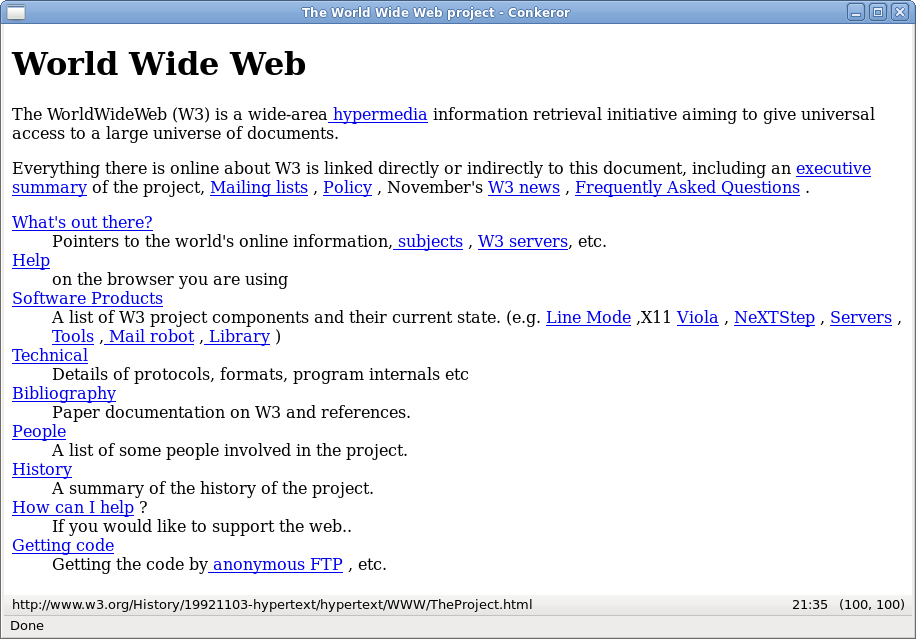The World Wide Web
Connecting Researches and Researchers

While Tim Berners-Lee was working at CERN1 (Conseil Européen pour la Recherche Nucléaire) in a computing services section, he noticed that physics research often needs to be performed by different institutes at the same time. So, Tim had the idea of connecting researchers from all over the world, even in remote sites, in order to share information. But instead of just sharing single files, he suggested to share and link multiple files to each other, creating cross-references from one file to another.
He thought as well that this could be done by using some form of “hypertext”, an instrument needed to link documents, on which you could simply click to jump from one document to another.
Tim's prototype Web browser came out in 1990, on the NeXT computer.
Hypertext
It was with the advent of the personal computer that hypertext came out, but in its early version hypertext jumps could only be made to files on the same computer. Creating links to computers on the other side of the world were still out of the question: nobody yet had implemented a system involving hypertext links on a global scale.
To Tim Berners-Lee, global hypertext links seemed possible, but it was a matter of finding the right way to implement them. Using an existing hypertext package might seem an attractive proposition, but this was impractical for a number of reasons. Any hypertext tool to be used worldwide would have to take into account that many types of computers existed that were linked to the Internet: Macintoshes, UNIX machines, Personal Computers2 and simple terminals3, and this led to the invention of HTML.
External Links
- Official CERN website. [Visited on 06/11/2014]
- Personal computer - Wikipedia [Visited on 06/11/2014]
- Computer terminal - Wikipedia [Visited on 06/11/2014]
- What happens in an internet minute? [Visited on 06/11/2014]